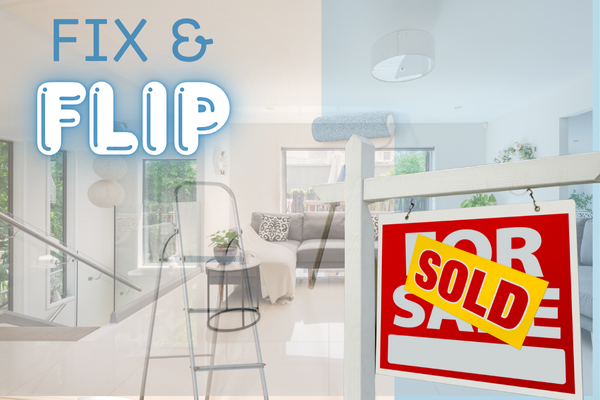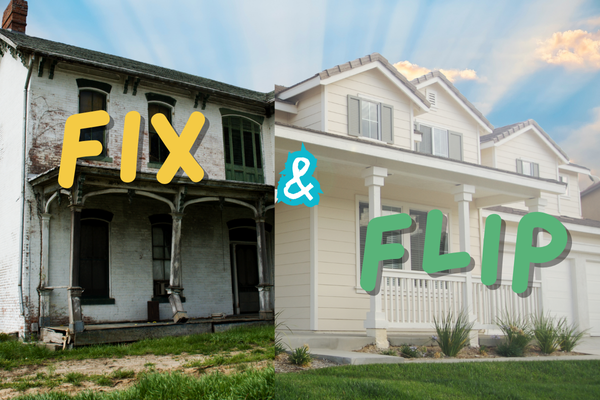
Flipping houses can be a lucrative venture, but success hinges on making informed financial decisions. A Fix and Flip Calculator for Real Estate Investing is an essential tool for real estate investors to determine the maximum purchase price for a property, ensuring a profitable outcome. By factoring in key metrics like After Repair Value (ARV), repair costs, holding costs, and market conditions, you can make data-driven decisions and avoid emotional pitfalls. In this comprehensive guide, we’ll walk you through how to use a fix and flip calculator, address common investor pain points, outline the stages of a fix and flip project, and highlight why Jhenesis Mortgage is your trusted partner for fast and flexible financing.
Why Use a Fix and Flip Calculator?
A fix and flip calculator helps investors determine the maximum amount they should pay for a property to achieve their desired profit margin. By inputting variables like ARV, repair costs, holding costs, and financing terms, you can calculate whether a deal is financially viable. The goal is to take emotions out of the equation and focus on the numbers, ensuring your investment aligns with your financial goals.
For example, when deciding to purchase a property, ask yourself: What is the least amount of money I’m willing to work for based on the estimated time to complete and sell the property? From there, you can work backward to determine the maximum purchase price, factoring in all associated costs.
Key Metrics for a Fix and Flip Calculator for Real Estate Investing
To use a fix and flip calculator effectively, you need to understand the key metrics involved:
- After Repair Value (ARV): The estimated value of the property after renovations are complete. ARV is determined by analyzing comparable properties (comps) in the same area, typically sold within the last six months.
- Repair Costs: Include all renovation expenses, such as materials, labor, and permits. Always add a 15% overrun to account for unexpected issues like structural repairs or material cost increases using Jhenesis Mortgage repair estimate calculator.
- Holding Costs: Expenses incurred while owning the property, including property taxes, insurance, utilities, and loan interest. These costs can add up quickly, especially if the project timeline extends.
- Loan-to-Cost (LTC): The percentage of the total project cost (purchase price + renovation costs) covered by the loan. Many lenders, like Jhenesis Mortgage, offer up to 95% LTC.
- Loan-to-Value (LTV): The ratio of the loan amount to the property’s ARV, typically capped at 80% ARV for fix and flip loans.
- Profit Margin: The minimum profit you aim to achieve, often targeted at 10-20% ROI for fix and flip projects.

The 70% Rule
A common guideline for fix and flip investors is the 70% rule, which suggests paying no more than 70% of the ARV minus repair costs. For example:
- ARV: $300,000
- Repair Costs: $50,000
- Maximum Purchase Price = ($300,000 × 70%) – $50,000 = $160,000
This ensures a buffer for profit after accounting for all expenses.
Steps to Fix and Flip Calculator for Real Estate Investing
- Estimate ARV: Research recent sales of comparable properties in the same neighborhood. Work with a real estate agent or appraiser for accurate comps.
- Calculate Repair Costs: Obtain contractor bids and include a 15% contingency for unexpected expenses.
- Determine Holding Costs: Estimate property taxes, insurance, utilities, and loan interest based on your project timeline (typically 6-12 months).
- Input Financing Terms: Include loan details, such as interest rates and fees. Jhenesis Mortgage offers up to 95% LTC and 80% ARV financing with closings as fast as 7 days.
- Set Your Profit Goal: Decide on your minimum acceptable profit (e.g., $30,000 or 15% ROI) and work backward to calculate the maximum purchase price.
- Run the Numbers: Use a fix and flip calculator to input all variables and determine the maximum purchase price that aligns with your profit goals.

Real Estate Investor Pain Points
Fix and flip investing comes with challenges that can impact profitability. Here are common pain points and how to address them:
- Market Corrections: As real estate markets fluctuate, property values may not appreciate as expected. Accurate ARV calculations and conservative estimates can mitigate this risk.
- Financing Hurdles: No-QM (non-qualified mortgage) lenders have tightened guidelines during market corrections, but solid deals with strong ARV and profit potential are more likely to secure funding.
- Unexpected Costs: Unforeseen repairs, like mold or structural issues, can derail budgets. Always include a contingency fund (10-20% of renovation costs).
- Project Delays: Delays increase holding costs and reduce ROI. Work with reliable contractors and set realistic timelines with buffers.
- Lack of Experience: First-time flippers may struggle with estimating costs or navigating financing. Partnering with experienced lenders like Jhenesis Mortgage can provide guidance and streamline the process.
FAQ
Stages of a Fix and Flip Project
Fix and flip projects typically follow these stages, each requiring careful planning and execution:
- Acquisition:
- Identify a distressed property with profit potential.
- Use a fix and flip calculator to ensure the purchase price aligns with your budget and ARV.
- Secure financing from a lender like Jhenesis Mortgage, which offers fast closings in as little as 7 days.
- Renovation:
- Hire reliable contractors and create a detailed scope of work.
- Monitor progress to stay on budget and timeline.
- Request draws from your loan to cover rehab costs, as offered by Jhenesis’s flexible financing options.
- Sale:
- Work with a real estate agent to list the property at a competitive price based on ARV.
- Factor in closing costs, realtor fees, and staging expenses to calculate net profit.
- Exit Strategy:
- Pay off the loan with sale proceeds or refinance into a long-term rental loan if you decide to hold the property.
- Evaluate ROI to assess the project’s success and refine your strategy for future flips.
Fix and Flip for Different Experience Levels
Whether you’re a novice or a seasoned investor, a fix and flip calculator and the right financing partner can make all the difference:
- First-Time Flippers:
- Focus on smaller projects with manageable repair costs.
- Partner with experienced contractors and lenders like Jhenesis Mortgage, which supports first-time investors with **WINDOWS
- 95% LTC financing minimizes upfront cash requirements.
- Intermediate Investors:
- Use your experience to tackle larger renovations or multi-unit properties.
- Leverage Jhenesis’s 80% ARV financing to fund bigger projects while maintaining healthy profit margins.
- Seasoned Pros:
- Scale your portfolio with multiple flips, using lines of credit or high-leverage loans.
- Jhenesis’s fast closings and in-house servicing ensure seamless project execution.
Why Choose Jhenesis Mortgage?
Jhenesis Mortgage is a top real estate investment mortgage broker, offering tailored fix and flip loans to investors at all experience levels. Here’s why investors trust Jhenesis:
- High Leverage Financing: Up to 95% LTC and 80% ARV, reducing out-of-pocket costs.
- Fast Closings: Secure funding in as little as 7 days, allowing you to compete with cash buyers.
- Expert Guidance: Dedicated account executives provide personalized support from acquisition to sale.
- Flexible Terms: Interest-only payments and no prepayment penalties maximize cash flow.
Contact Jhenesis Mortgage at 407-630-9766 or [email protected] to get pre-qualified today..
Q: What is a fix and flip calculator?
A: A fix and flip calculator is a tool that helps investors determine the maximum purchase price for a property by factoring in ARV, repair costs, holding costs, financing terms, and desired profit margin.
Q: How do I calculate ARV?
A: ARV is calculated by analyzing recent sales of comparable properties in the same area, adjusted for differences in size, condition, and features. Work with a real estate agent or appraiser for accuracy.
Q: What is the 70% rule?
A: The 70% rule suggests paying no more than 70% of the ARV minus repair costs to ensure a profitable flip. For example, if the ARV is $300,000 and repairs cost $50,000, the maximum purchase price is $160,000.
Q: How much can I borrow for a fix and flip?
A: Lenders like Jhenesis Mortgage offer up to 95% LTC and 80% ARV, covering most of the purchase and rehab costs. The exact amount depends on the property’s ARV and your experience level.
Q: How do market corrections affect fix and flip investments?
A: During market corrections, ARV estimates may be less reliable, and lenders may tighten guidelines. However, well-calculated deals with strong profit potential are more likely to secure funding.
Q: Can first-time flippers get financing?
A: Yes, Jhenesis Mortgage specializes in helping first-time flippers with flexible qualification requirements and high-leverage loans to minimize upfront costs.
Ready to turn your fix and flip dreams into reality? Jhenesis Mortgage provides the fast, flexible financing you need to succeed in today’s competitive real estate market. With up to 95% LTC and 80% ARV financing and closings in as little as 7 days, we’re here to help you maximize profits at every stage of your project. Get pre-qualified today! Call 407-630-9766, email [email protected], or

Start your next fix and flip project with confidence.

